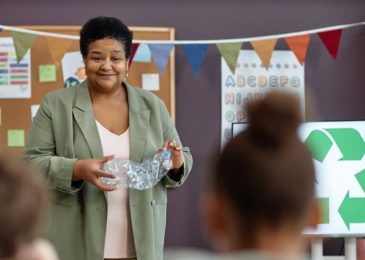The COVID-19 pandemic has had a tremendous impact on the global education system. It is reshaping education. As schools continue to enforce strict protocols or remain closed, and with students missing classes, most educational institutions have either cancelled classes or shifted to online learning. Many teachers have found themselves out of work, while others are forced to find new jobs in other fields. Online classes are becoming more popular as educators attempt to keep up with the latest technology trends.

Still, many people feel that this is not an acceptable substitute for traditional classroom instruction. The pandemic has no doubt reshaped education in many ways. Here are five ways how it is reshaping our education system.
The Pandemic Has Changed the Way Schools Are Teaching
Many learning institutions have restructured their teaching methods due to the COVID-19 pandemic. The need for a more hands-on learning experience has grown since students have fewer hours in the day. A greater emphasis is placed on making sure all of these hours are spent efficiently using active learning methods that engage students more actively. The goal is to ensure that classes stay small enough to provide personalized attention while also following health protocols.
You can go to ACS-college.com to understand how learning institutions are aligning learning materials with current realities, in order to offer students high-quality market-oriented education. More schools are choosing blended learning models where students spend some of their time in class receiving lectures or other instruction while the rest is spent working on projects, doing lab work, studying with peers in study groups, all under teacher guidance but outside of the classroom.
Schools are Now Using Video Conferencing to Teach Students
Schools used to hesitate with using video conferencing because of bandwidth issues. Now, they’re modernizing their network infrastructure for students who are unable to come to school due to COVID-19 restrictions. Video conferencing has allowed schools to connect with students who are unable to attend classes due to illness or quarantine, which allows learners to keep up with the curriculum. This is especially helpful for distance learning programs in post-secondary institutions, which have already existed even before the pandemic.
Now with the rise of online learning, schools are beginning to offer university-level courses to a wider range of students. This has been especially true in remote areas that did not have a lot of options for higher education. Now that students don’t need to go to campus physically, distance learning programs can be offered at accelerated rates using video conferencing equipment. In addition, schools are now beginning to use more online platforms in order to keep up with demand from students and faculty alike.
More Parents are Considering Homeschooling as an Option
Many parents opted to keep their children out of school to help them avoid potentially catching COVID-19. Some children might also not be able to attend classes due to their health conditions related to the pandemic. With the challenges that the COVID-19 pandemic has created for public schools, homeschooling is becoming a more attractive, safer option for parents and children. It is completely reshaping education.
Homeschooling provides learners with a safe learning environment at home rather than having them attend physical classes, where safety risks may outweigh the benefits. Homeschooling will give your kids peace of mind as they go about their day without having to worry about catching COVID-19. Even as a temporary measure, keeping kids at home may be the best way to keep them safe.
New Technology and Techniques to Engage Students
There’s no doubt that teachers and lecturers in higher education institutions are feeling the pressure brought on by COVID-19. With the massive disruption in learning, there has been a shift in teaching styles and techniques. Advances in technology have made it possible to deliver lessons and engage students in innovative ways. For instance, virtual reality has become an important teaching tool. It enables students to have real-world experiences through simulations, especially in engineering, construction, architecture, and design courses.
Universities around the world are also using digital assistants to provide students with access to information when they need it most. These devices can be programmed for an individual student or groups of them based on their needs at any given time in order to ensure that they’re following through on lectures and coursework. Keeping students safe is one of the key objectives behind these changes in education. It’s not just about engaging learners but also allowing them to access information when they need it most.
The School Curriculum is Evolving as a Result of the Pandemic
The COVID-19 Pandemic has led to some major changes in education curricula. Different countries have taken various approaches to deal with the challenges of the pandemic. Each country has adapted methods that work best for them. One of the biggest changes is allowing students more flexibility when choosing what they want to learn about. This is an effort to help students be more engaged and interested in their schoolwork.

Another change is the implementation of online courses for those who are unable to attend classes due to illness or other medical reasons related to COVID-19. These programs have had a lot of success, as they allow flexibility while still providing quality education. Many schools have learned that a hybrid of physical classes and online courses might be best. Many institutions use e-learning methods in combination with traditional classroom activities such as quizzes and assessments.
We Have to Adapt to Changes
The COVID-19 pandemic is reshaping the way we view education and the way we teach students. The only way to succeed is by adapting and making necessary changes in our learning institutions while ensuring students receive the best possible education. Every school district must rethink its approach to teaching students to improve their educational outcomes.





